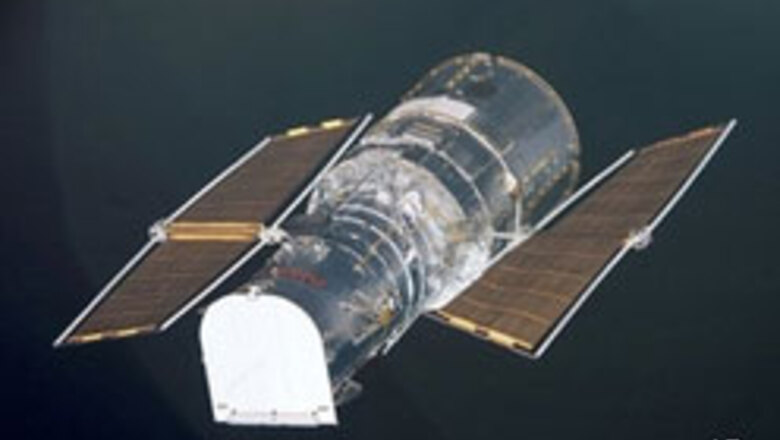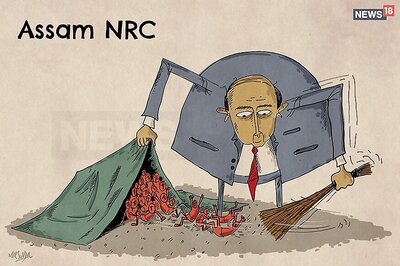
views
Greenbelt (Maryland): NASA said on Tuesday it would undertake a potentially risky shuttle mission to extend the life of the Hubble Space Telescope until at least 2013.
NASA Administrator Michael Griffin, speaking to cheering scientists who had feared Hubble's earlier demise, said a space shuttle would make one final maintenance trip, tentatively in 2008, to the orbiting telescope.
The $900 million trip will go ahead even though the shuttle astronauts will be unable to take shelter on the International Space Station if something goes wrong, Griffin said at the Goddard Space Flight Center near Washington.
Hubble is used by thousands of scientists around the globe and is considered by some to be the most important astronomical instrument ever.
It seized the public's interest as it captured images of star birth and death, detected planets outside our solar system and snapped eye-catching visions of the Milky Way and other galaxies.
Goddard Space Flight Center Director Ed Weiler said Hubble had fundamentally changed what scientists know about the universe.
"The universe doesn't read our textbooks," he said. "It has this bad habit of not doing things we say it should,” Weiler added.
Scientists say that without repairs the 16-year-old orbital observatory would function for only two or three more years.
The upgrades should keep the telescope working until its successor, the James Webb Telescope, is functional in 2013.
The maintenance mission will install new instruments that will allow scientists to look deeper into space and farther back in time to learn more about how the universe was created. Worn-out batteries and faulty gyroscopes will also be replaced.
"I think we can approach the ultimate limits of what Hubble was designed to do," said NASA senior project scientist David Leckrone.
NASA had earlier planned a servicing call to the telescope- the fifth since its launch in 1990- to install two new science instruments and replace spent batteries and faulty steering gyroscopes.
It canceled that trip after seven astronauts were killed when the shuttle Columbia disintegrated as it returned to earth in 2003.
Safety upgrades put in place since then call for shuttle astronauts to stay aboard the International Space Station if they find their shuttle has been damaged.
Crews heading to Hubble's orbit, however, cannot reach the station.
Griffin said a second shuttle would be ready to launch if a Hubble repair crew runs into trouble. There are no guarantees a rescue mission would work, however.
"We all as a nation know now that flying the shuttle carries more risk than we would like," Griffin said.
Shortly after it was launched in 1990 from space shuttle Discovery, Hubble was found to have a flaw in its main mirror that blurred its vision. Astronauts corrected the problem in a shuttle mission in 1993.
The final maintenance trip is tentatively set for May 2008. Astronauts on the 11-day flight will take five separate space walks to add the new equipment.
"We're essentially going to get a new Hubble," said Maryland Democratic Sen Barbara Mikulski (news, bio, voting record), who fought to preserve the telescope when NASA decided to cut off support in 2004.
Cancellation of the Hubble servicing drew harsh public criticism and NASA later vowed to reconsider its decision.
NASA will devote 14 flights before the fleet is retired in 2010 to finish building the $100 billion space station, a project of the United States, Russia, Europe, Japan and Canada.


















Comments
0 comment